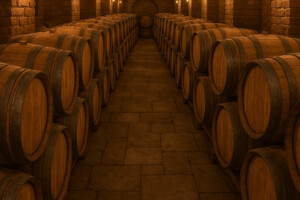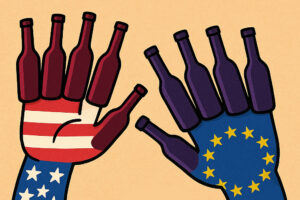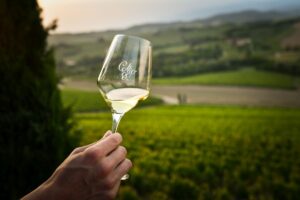“The common man in the street thinks of China and he thinks of porcelain, the Great Wall and kung-fu, he thinks of Japan and he thinks of geishas, samurai and the tea ceremony, he thinks of Korea and he thinks of absolutely nothing but, perhaps, the confused memory of a distant conflict and a division”. This is how Maurizio Riotto, one of Italy’s leading orientalists, writes in his “History of Korea”, telling of a country still far from the radar of Italian wine, but with an economy in constant growth, and today it is the 12th in the world, which also makes wine imports fly, especially from France, Chile and Italy. Belpaese that, as the Ice director of Seoul Vincenzo Calì tells WineNews, from the first half of the Asian stage of Iem's Simply Italian Great Wines, is much closer than you might think.
“South Korea, a country of high innovation, which in 2019 will grow by 2.1%, has a very solid relationship with Italy: it absorbs 1% of Italian exports, a little less than Japan and a third of China, but with a thirtieth of its inhabitants, or just over 50 million. In addition, one million people leave from here every year to visit the Belpaese, more than from Japan, attracted by the love for the work, the craftsmanship and the Italian culture. Wine, in this context, is still a niche - explains Calì - like food and agriculture, but there is plenty of room to grow, despite the marginal presence of Italian restaurants, especially in terms of quality, especially because we are talking about a country with a millenary culture, solid and historically closed, but also with great vivacity and curiosity: not only geographically, but also symbolically halfway between Japan and China, South Korea can prove to be an important destination in the future”.
There is still a long way to go, as I said, because wine, in the consumption of alcohol, is only worth 4.4%, with spirits and beer at 40% each. Meanwhile, growth in 2018 was phenomenal: +20% in volume and +16.35% in value, for a total turnover of 232 million dollars, well above the average of +5% per year recorded between 2012 and 2017. And Italy, what weight and what role does it have? We talked about it with one of South Korea’s leading experts in the sector, Sang Mi Kim, the signature of the authoritative “Wine 21”, the reference magazine for Korean wine lovers.“From the data updated in October, it emerges that Chile, in volume, remains the main exporter, with a share of 30%, followed by France (16.5%), Spain (16.36%), Italy (15.87%) and the USA (7%), while in value first is France (32%), then Chile (20%), Italy (15%), USA (13%) and Spain (8%)”. For a total of about 30 million euros in 2018, but growing in 2019, of which 55% red wines, 18% white wines and 27% sparkling wines, “especially Moscato d'Asti, even if the taste goes in search of wines less sweet, opening the way to Prosecco, although, curiously, not to that of low price”.
Speaking of price, 70-80% of the market is made up of bottles under 20 dollars, which may seem like a lot, but “even if there are no duties between South Korea and the European Union, internal taxes are very high, equal to 60% of the initial cost, so a bottle that costs up to 20 dollars - emphasizes Sang Mi Kim - among shipping costs, importer’s margin, retailer’s margin and taxes leaves Italy at a very low price, while premium wines themselves cost on average 50 dollars per bottle, and do, at least for now, a certain effort. Also because, real wine lovers are still a niche, but the consumer base is growing, as shown by the large-scale distribution data, where in 2018 sales grew by 20%, especially thanks to the female public and younger people (20-30 years), whose purchases grew by +130%, focusing on white wines and half bottles (+30%). Another interesting fact - concludes the Korean wine writer - is that of the seven best selling wines in 2018, two are Italian: Moscato d'Asti Balbi Soprani and Brachetto d'Acqui Le Fronde by Fontanafredda”.
But how much is the South Korean market worth today for the producers of the Belpaese? The numbers say not much, but they are not the same for everyone, and even among the brands of the Institute dei Grandi Marchi there are those who point us strongly. Like Michele Chiarlo, who arrived, “worth three years ago - says Giovanni Bocchino, export manager of the Piedmont reality that made Nice great in the world - almost 400,000 euros, but after our importer was absorbed by a larger reality we have fallen to 280,000 euros, ready to rise. 70% of the turnover, which we have built up over ten years, comes from Moscato d'Asti, but Nice and Barolo also show significant growth. For us it is the first outlet in Asia, just like Japan and in front of China”.
Another symbol of Italian enology, Jermann, a Friuli Venezia Giulia brand with its iconic whites, is taking its first steps in South Korea. Historically, it cannot be defined as an export-oriented company, as Felix Jermann, the latest generation of the Friulian winery, admits. “Our export share is 35%, the first market is still by far the domestic one, but things are changing, in the world and in Jermann's house, and the goal now is to grow, even in less traditional markets, such as South Korea, where we have recently arrived, gathering however some beautiful satisfactions, also thanks to the work of our importer, Enoteca (which also imports other brands of the Belpaese, from Allegrini to Bellavista, from Bruno Giacosa to Sassicaia, from Gaja to Soldera, ed). There is enormous potential to exploit and great spending capacity, especially for premium wines, which have their own market, that's really promising”.
Copyright © 2000/2025
Contatti: info@winenews.it
Seguici anche su Twitter: @WineNewsIt
Seguici anche su Facebook: @winenewsit
Questo articolo è tratto dall'archivio di WineNews - Tutti i diritti riservati - Copyright © 2000/2025








































































































































































































